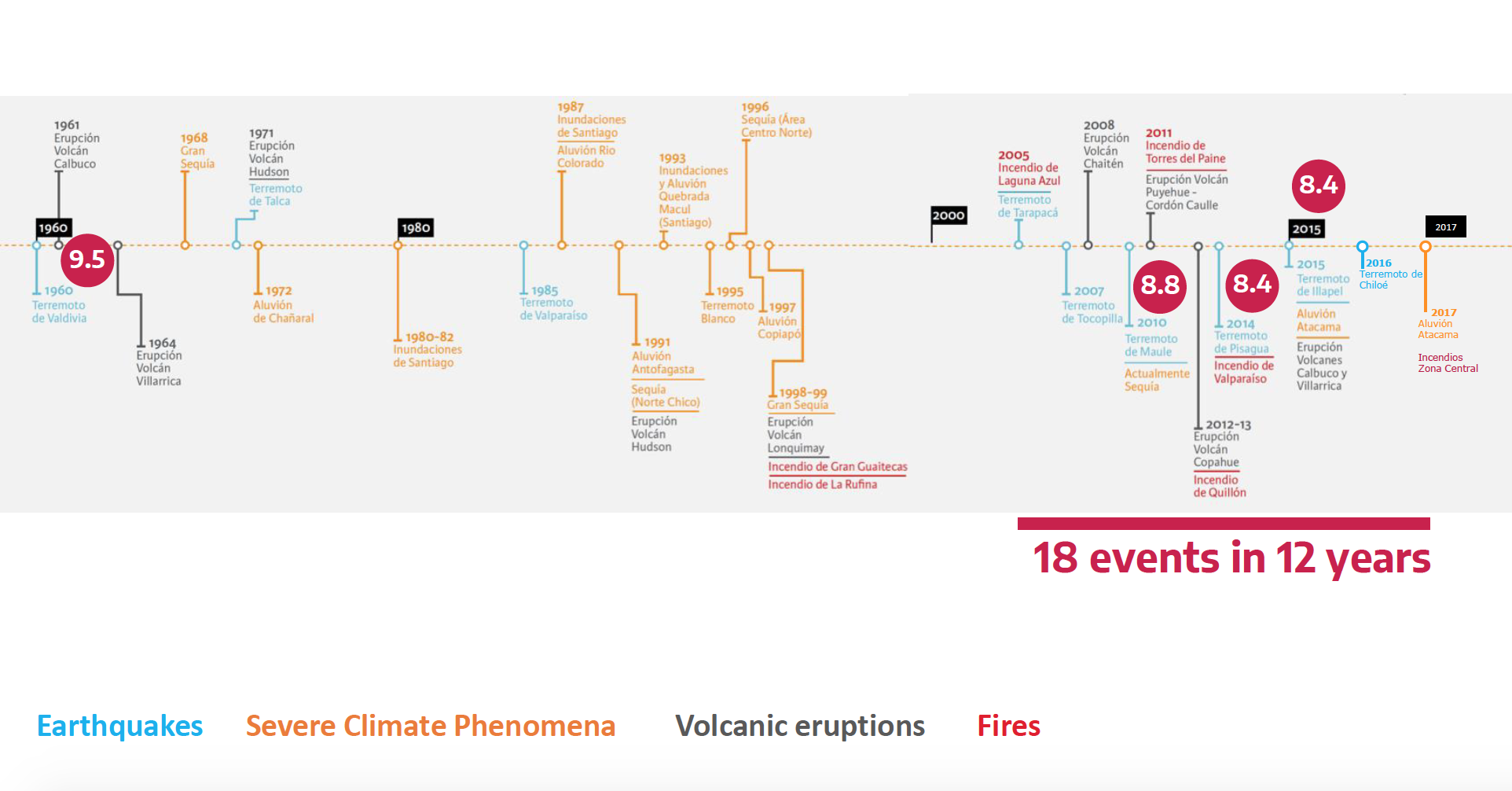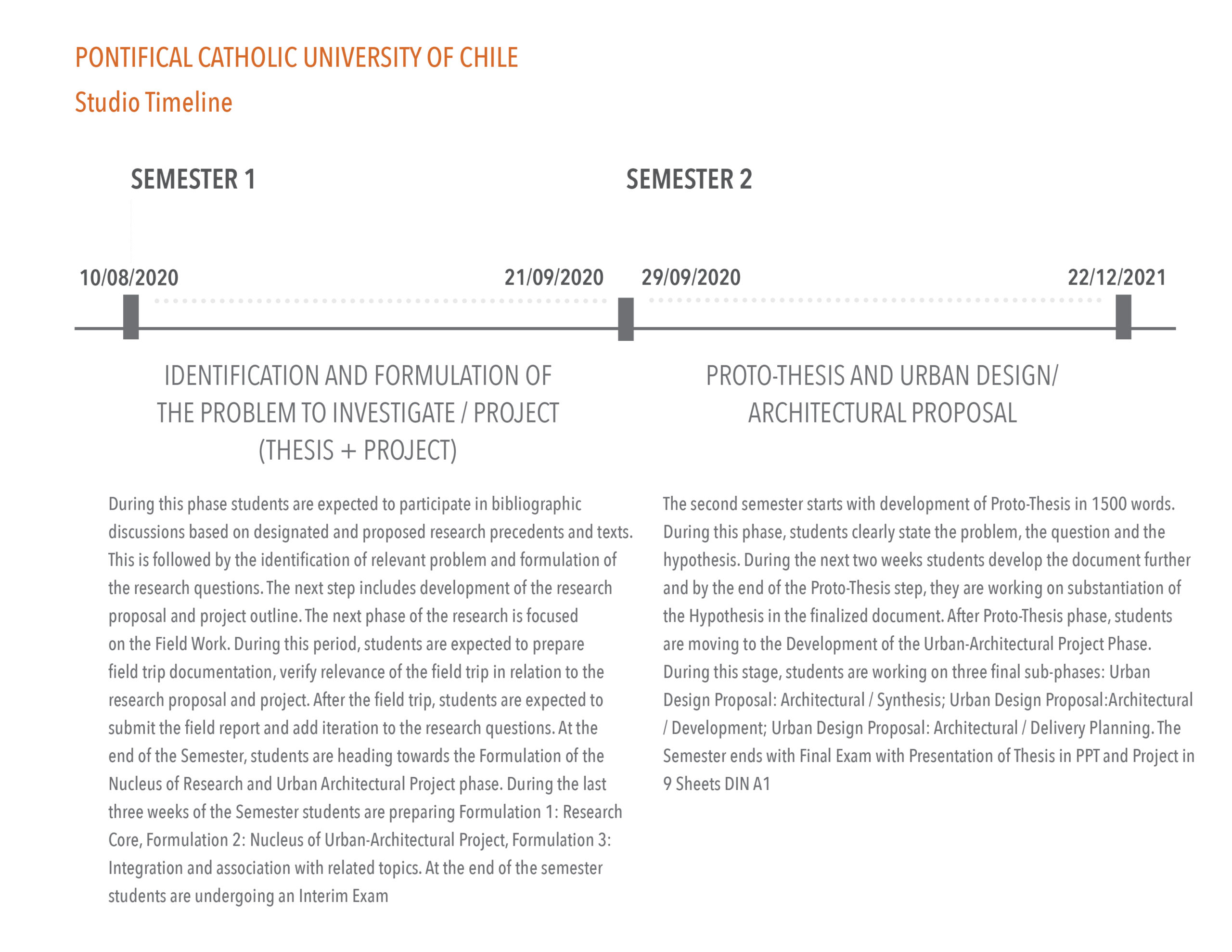
Chile is widely known for being a hazard-prone country, the most exposed to natural disasters among OECD members, and listed in the ten countries most exposed to multiple hazards. Therefore, the growing occurrence of other events, such as droughts, landslides, tsunamis, is leading the country to extend this awareness to multi-hazard exposure and is currently in need of a comprehensive framework for multi-hazard assessment and strategic planning to be embedded in its knowledge repositories, institutional frameworks, public policies, and population awareness.
The studio addresses the issue of multi-hazard exposure in Chile for the case of the capital Santiago, by systematically studying the underlying disaster risk factors and integrated planning for resilience (UNDRR 2015, Garrido and Saunders 2019). The Hypothesis from which the studio starts is that the city responds correctly to these challenges through the study of four research and design topics: Underlying Risk Factors; Integrated Assessment; Integrated Planning for Resilience; Urban and Architectural Design.
Underlying Disaster Risk Factors: Addressing underlying risk factors cost-effectively through investment versus relying primarily on post-disaster response and recovery. Reducing exposure and vulnerability, thus preventing the creation of new disaster risks and accountability for disaster risk creation. Focused on tackling underlying disaster risk drivers, such as the consequences of poverty and inequality, climate change and variability, unplanned and rapid urbanization, poor land management and compounding factors such as demographic change, weak institutional arrangements, non-risk-informed policies, lack of regulation and incentives for private disaster risk reduction investment, complex supply chains, limited availability of technology, unsustainable uses of natural resources, declining ecosystems, pandemics, and epidemics.
Comprehensive Assessment and Integrated Planning for Resilience: The Sendai Framework for Action identified land use planning and legislation as a priority action for disaster risk reduction (DRR). It is necessary to enhance the holistic understanding of the factors and components that determine resilience. To do this, we work on mechanisms for multidimensional risk mapping and on exploring structural / non-structural measures to reduce exposure and limitations. The Studio will explore actions at the local and metropolitan levels to assess a more efficient level of risk reduction. The work will consider decision-making at the local level will be limited by economic policies and policies, especially in periods of high uncertainty such as the current one. (Burton, Deierlein et al. 2017, Garrido and Saunders 2019)
Urban and Architectural Design: During this phase, students will primarily address the question about the potential for urban and architectural design to reinforce the capabilities of urban communities to recover from adversity to continue projecting the future? Specific questions subordinated to the previous one are: What are the social, cultural, technical, and material dimensions? What do the underlying irrigation factors mean from an urban and architectural point of view? What opportunities does this multi-hazard perspective offer? How does it translate into an urban and architectural project that incorporates the aforementioned dimensions?
Metropolitan Area of Santiago
